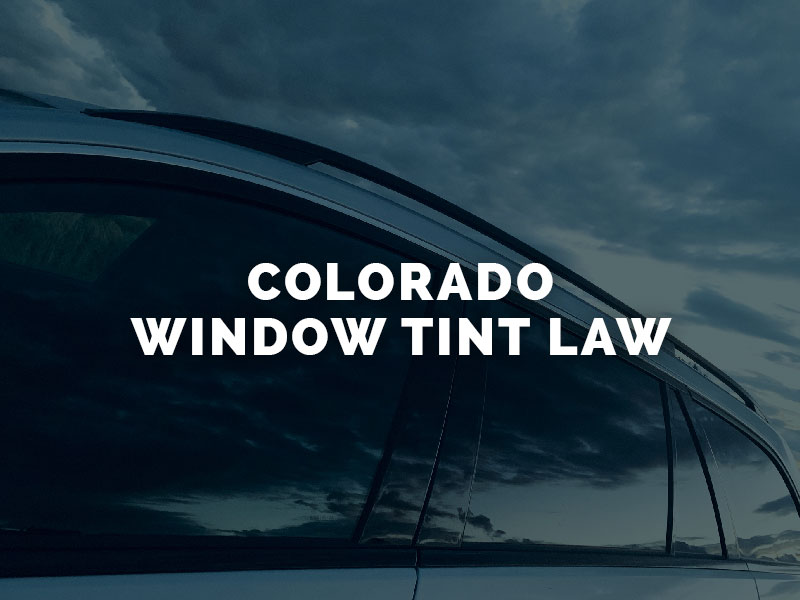Window tint is a great way to increase a vehicle’s privacy and achieve better temperature control. If the owner of the vehicle goes too dark with tinting, however, the window tint could be breaking the law in Colorado.
Like most states, Colorado state law has rules for how opaque window tint may be. Using the correct tinting can help a driver avoid legal trouble. It is an infraction to use the wrong type of tint. Using the wrong tint could also give a driver liability for an auto accident, in some circumstances.

The main window tint law in Colorado has to do with tint darkness. Colorado measures window tint in terms of VLT percentage, or visible light transmission percentage. VLT is the amount of light the window tint film lets through. All tinting from a vehicle’s manufacturer is legal in Colorado, but certain types of aftermarket tint are illegal. According to Colorado Revised Statute 42-4-227, car windows must remain unobstructed, with certain materials (including tint) prohibited by law. It is a Class B traffic infraction to break this law by using illegal shades or types of window tint.
A vehicle can have either 27% or more VLT window tinting on all four side windows and the rear window, or any percentage VLT window tinting on the back side windows and back window as long as the front two windows have no tinting. A vehicle cannot lawfully have rear and back windows with less than 27% VLT if the front windows have any type of window tinting. If a vehicle does have back window tint, it must have mirrors. It is illegal to have metallic or mirrored window tinting on any windows. It is also against the Colorado inspection law to use tinting in a red or amber color. A sticker to identify legal window tinting is currently not required under Colorado window tint law.
Colorado state law permits nonreflective window tint only on the top four inches of a windshield. It is against the law to tint the entire windshield, regardless of the VLT of the tint. Tinting a full windshield goes against Colorado’s requirement for an unobstructed view of the road. Putting tint over the entire windshield could make it more difficult to see the road, paint on the road, roadway signs, traffic lights and pedestrians. The top four inches can contain nonreflective window tint of any VLT percentage, however, regardless of whether other windows contain tinting as well.
Although breaking Colorado’s window tint laws is a Class B infraction that can come with a traffic ticket, it can have additional legal repercussions as well. If a driver has an illegal type or VLT of window tint on his or her car windows and causes an accident from lack of appropriate visibility, for example, that driver could be liable for the crash. Colorado uses a fault-based car accident system, meaning the driver that caused the crash will have to pay for everyone else’s damages. Proving fault for a car accident, however, may take gathering evidence.
The injured party (the plaintiff) will be responsible for proving the other driver’s fault for the collision during an insurance claim or personal injury lawsuit in Colorado. The plaintiff can hire a Denver car accident attorney to help with this burden of proof. A lawyer can review the crash, reconstruct it with help from experts, speak to eyewitnesses, take photographs and use other steps to prove that the driver caused the collision from lack of proper visibility due to illegal tint. If the driver could not reasonably see the road through an illegal type of tinting, that driver may be financially responsible for victims’ damages. Excessive tinting can cause dangerous roadway situations and car accidents.